Practical Handloading
Boat-tail and Flatbase Bullets
column By: Rick Jamison | June, 19
Bullet technology has improved immensely during my lifetime. Now it is possible to obtain excellent hunting bullets with boat-tails, and today’s hunters want every downrange advantage possible. A boat-tail results in a higher ballistic coefficient (BC).
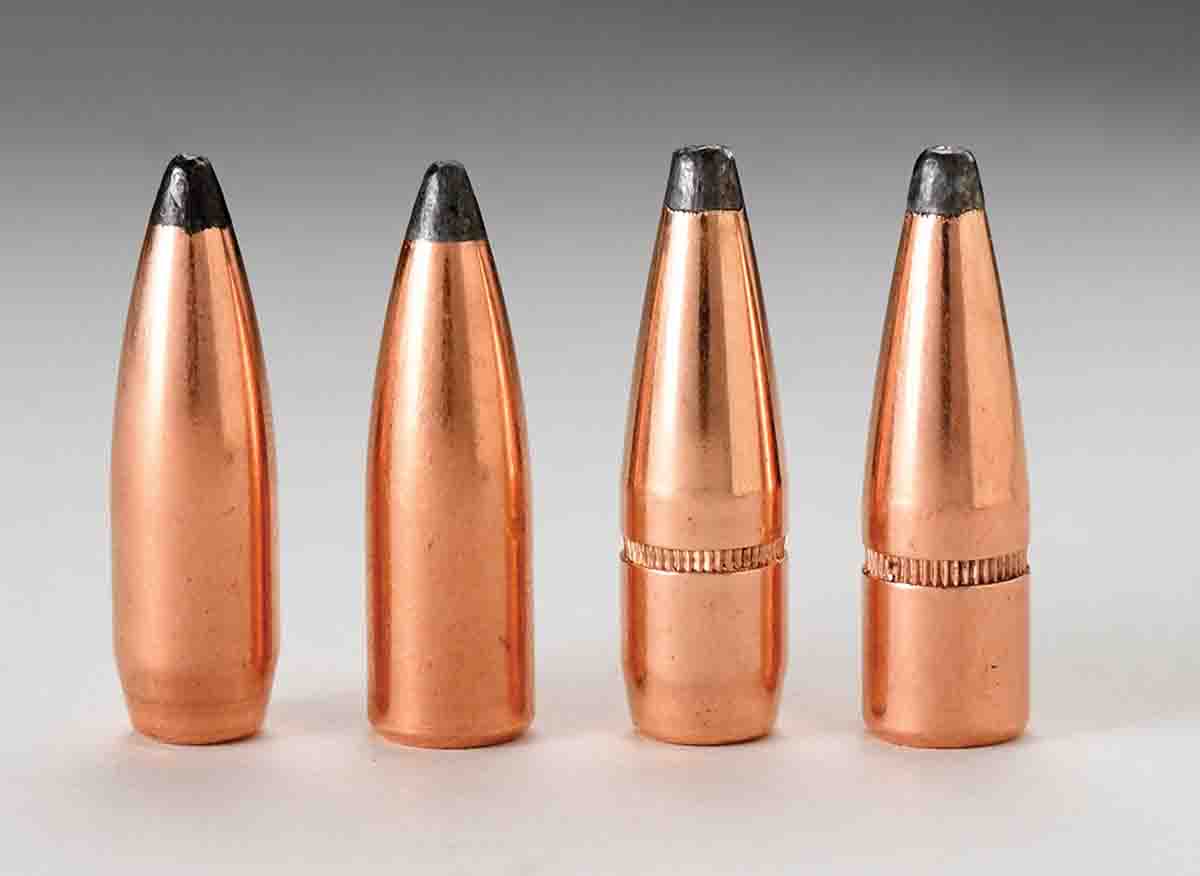
A higher BC indicates a more streamlined bullet with a flatter trajectory, greater retained velocity, energy and decreased wind deflection downrange. The advantage may be small with a boat-tail, depending on a lot of factors, but the advantage usually increases with shooting distance.
There is a rumor going around that flatbase bullets stabilize more quickly than boat-tail bullets, that they “go to sleep” more quickly and at shorter distance. It is one of those eyebrow-raising statements that simply begs a little experimenting.
It is true that the short distance 100/200-yard benchrest shooters have used flatbase bullets for a very long time. Generally speaking, a base-heavy bullet is considered to be very stable, and the precise, square-edged expansion ring at the base/sidewall junction of a flatbase bullet is considered to be a plus for gas sealing and keeping powder behind the bullet rather than wedging it into the sides of the barrel
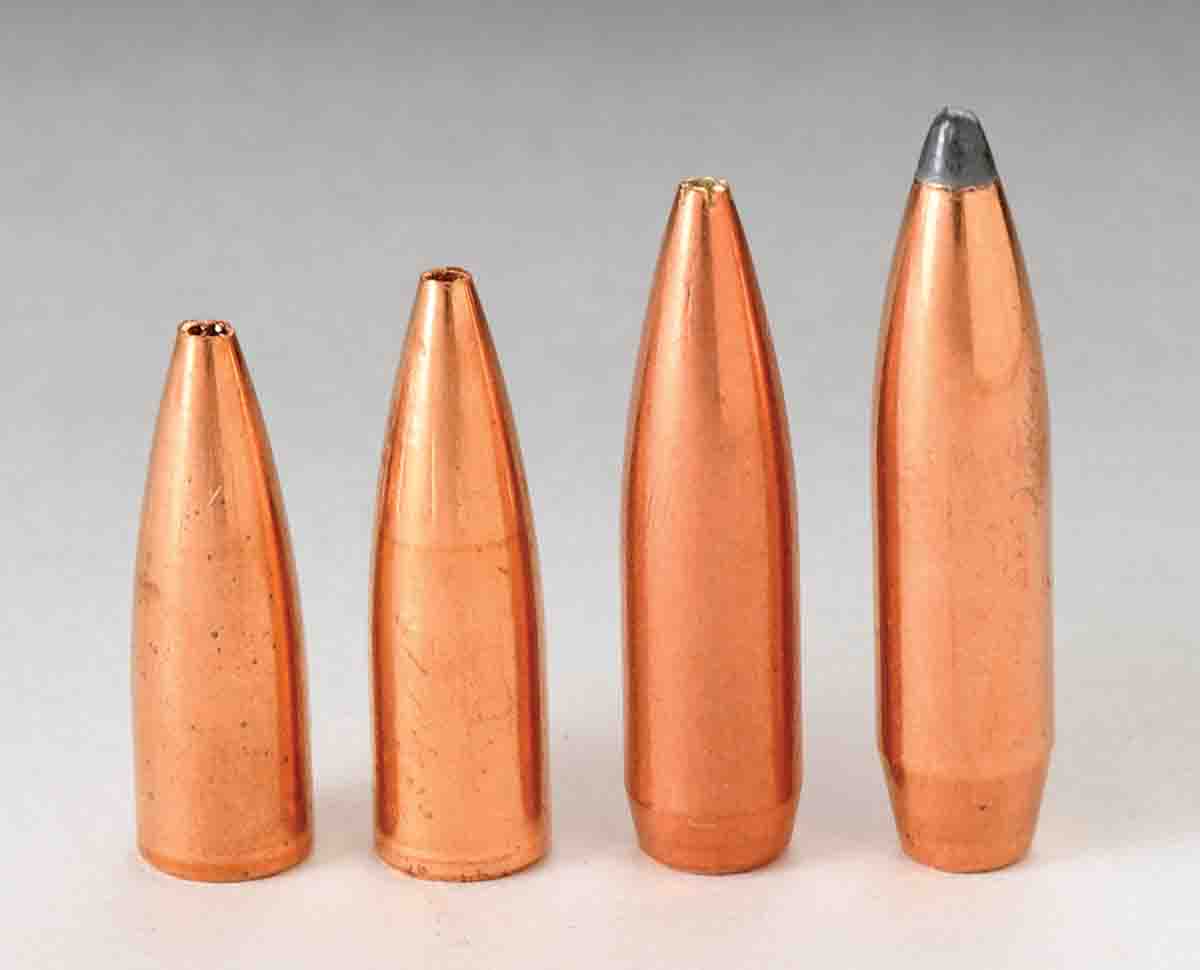
There is no doubt that bullet stability is important. In fact, BC is a measure not only of bullet shape but of its stability in flight. A bullet that spins on-center produces a higher ballistic coefficient in flight than an unstable bullet, and a bullet’s real-world BC can be influenced by rifling twist, velocity, the load and other factors.
In order to do a little comparison shooting, I looked for bullets that were similar in every respect with the exception of their bases, boat-tail vs. flatbase. I chose two Sierra bullets, the .30-caliber 150- grain flatbase Pro Hunter and the boat-tail GameKing. There are also two similar 150-grain .30-caliber bullets from Hornady, the softpoint InterLock and the boat-tail softpoint InterLock. The plan was to load and shoot them for ballistic coefficient over 100 yards from a .30-06 using an Oehler Model 43 PBL system. The results can be seen in an accompanying table.
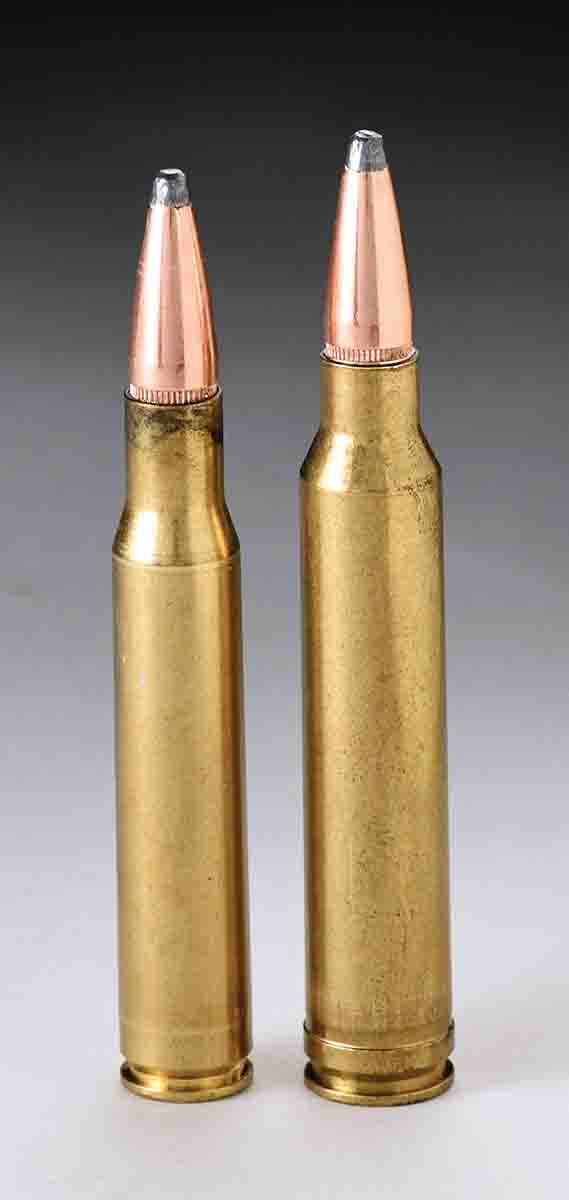
Hornady indicates a BC of .338 for its flatbase, and .349 for its boat-tail, with no velocity specified. Ballistic coefficients from the test barrel came in at .328 for the flatbase and .349 for the boat-tail. The flatbase was slightly poorer than advertised, and the boat-tail was exactly as advertised. Here, the results appeared to favor the boat-tail at the relatively short 100-yard distance. I looked back at my records to see if I had fired these same bullets at a longer distance to compare. Turns out, I fired the bullets at 200 yards from a .300 Winchester Magnum at lower pressures but with similar velocities, also in a 1:10 barrel twist during December 2001.
This latter test was under different ambient conditions with a temperature of 42 degrees Fahrenheit and 95 percent relative humidity. The recent 100-yard test was fired at 70 degrees and 50 percent humidity. The Hornady bullets fired 17 years ago did not have the InterLock feature, and it is possible that the Sierra bullets may have changed slightly over that time as well. These bullets are old, but they are contemporary and present a valid flatbase vs. boat-tail comparison.
The Sierra turned in a BC of .318 for the flatbase and .361 for the boat-tail over 200 yards. The Hornady produced a BC of .320 for the flatbase and .353 for the boat-tail during the 200-yard colder weather test.
The Sierra boat-tail has an advantage of only .010 over the flatbase at 100 yards, but at 200
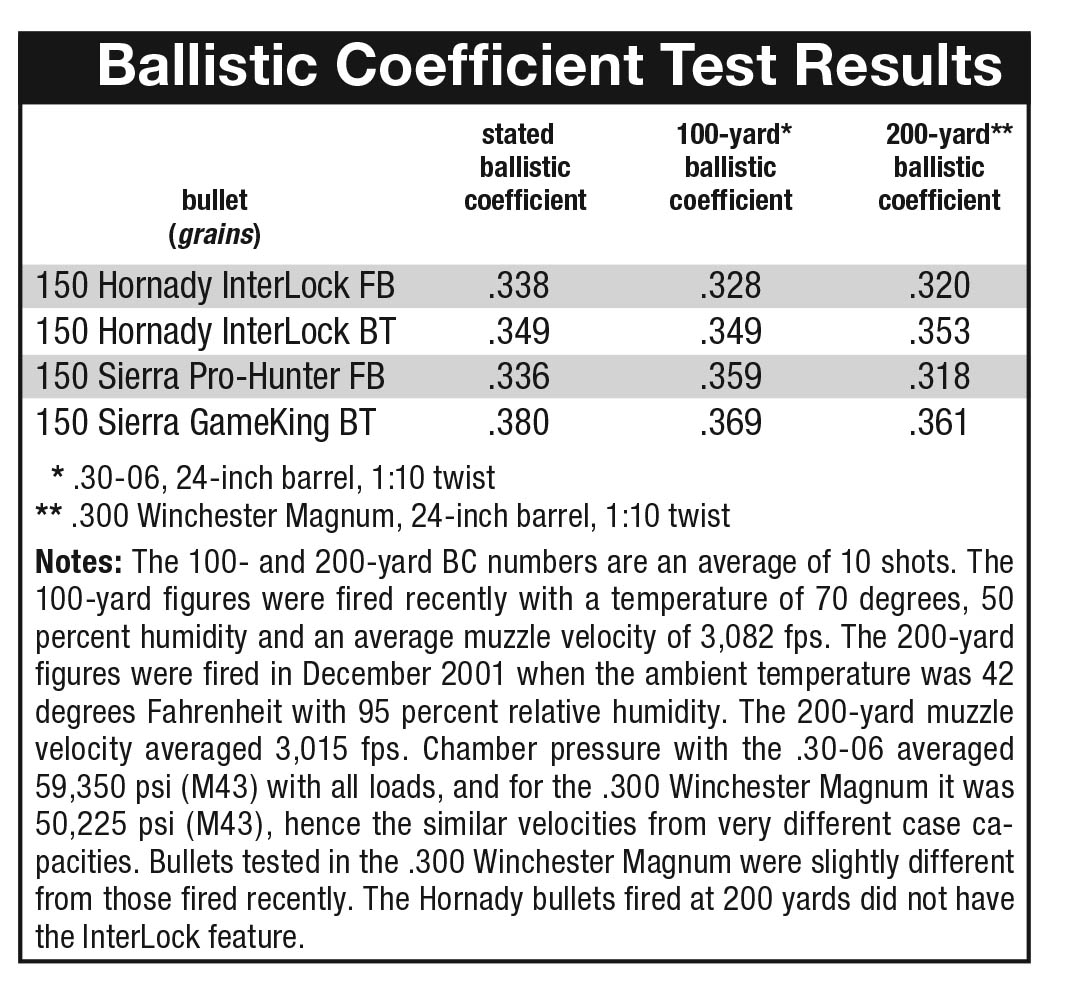
I know that ballistic coefficient can vary with the rifle and load, but at the same time BC is a significant indicator. A SWAT team composed of local law enforcement officers occasionally came to my range to train. One day, these accomplished shooters showed up as a group with a slew of new Remington Model 700 .223 Remington rifles. We fired them all for accuracy and ballistic coefficient over the Oehler chronograph using Federal match ammunition out of the same lot-numbered case. One of the rifles consistently produced a higher BC over 100 yards than the others on that day, and this rifle was consistently the most accurate of the bunch. The measured BC showed how notably stable the bullet was over that 100-yard distance.
I can also say that I have not seen ballistic coefficient consistently improve, at least to 300 yards, as I have read. At this point I even wonder about the term “go to sleep” when referring to a bullet. If bullet stability significantly improves downrange, exclusive of velocity lost, it indicates that the bullet is not well stabilized when it leaves a rifle’s muzzle. The more important question is why was a bullet unstable to begin with? Is it from barrel vibration? This is food for campfire conversation.
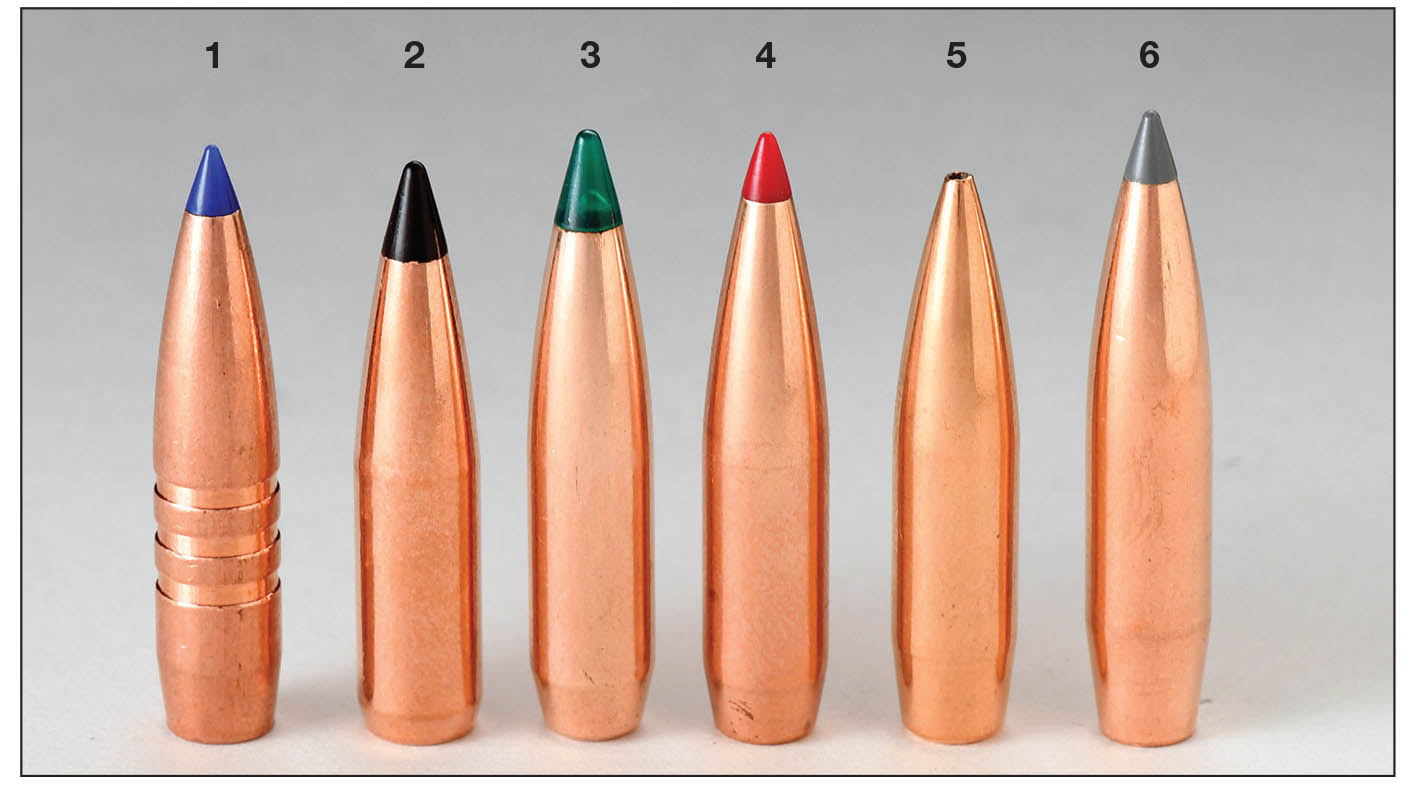
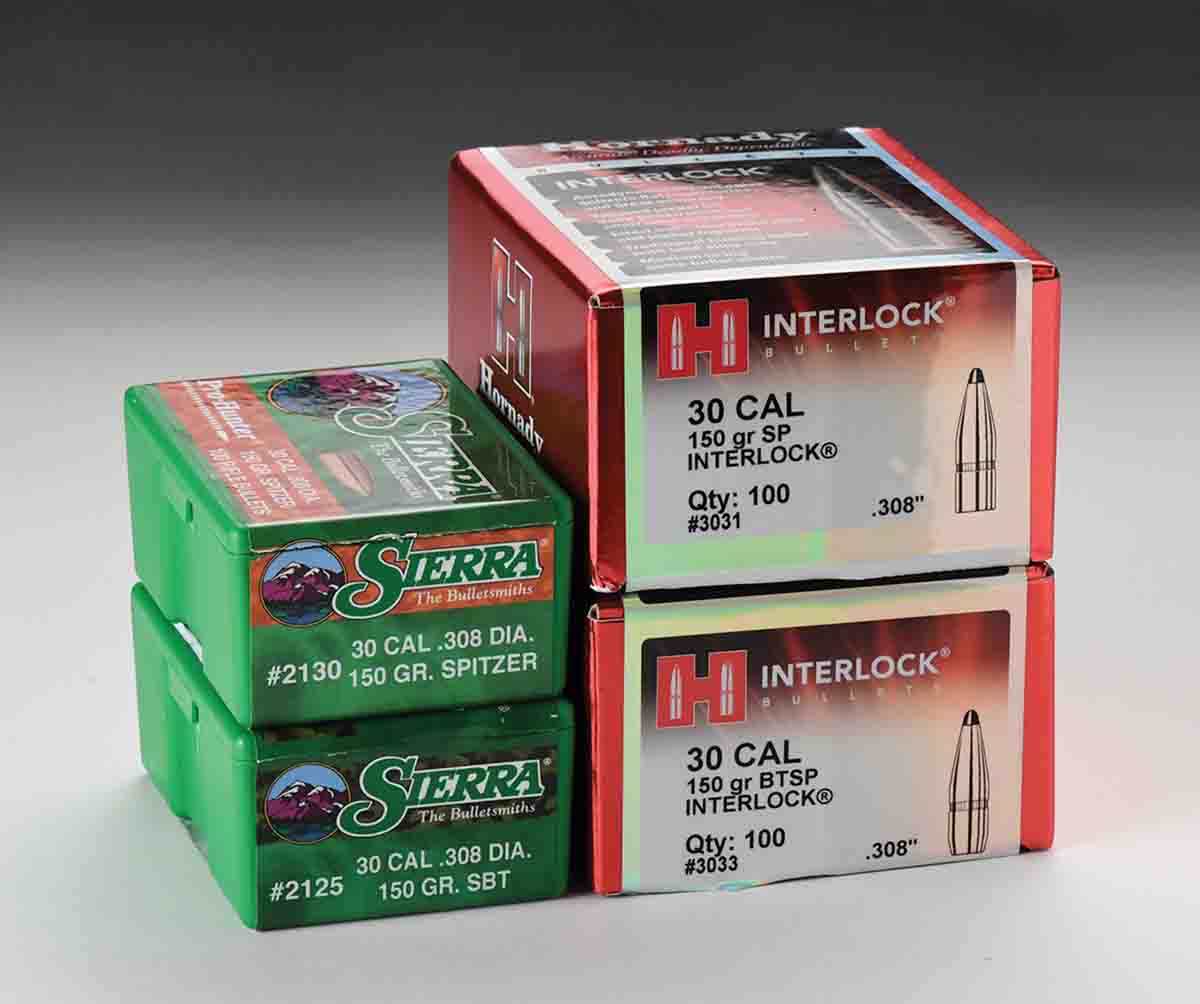
Blanket statements usually cannot be made about ballistic coefficient. It is a lot like published velocity. Manuals can serve as a guide, but you really do not know what velocity a given load will provide from your rifle unless it’s chronographed. Published BCs provide a really good number useful for most hunting distances. However, rather than relying on tables, it is always best to do the shooting with your specific rifle and find out for yourself what you need to know to make a downrange shot.
Unless you are a short-range target shooter, a boat-tail bullet produces an advantage if it is properly stabilized. Just pick a sleek-looking boat-tail bullet, find an accurate load using a barrel with an appropriate twist, and don’t worry about the rate at which your bullet stabilizes.


